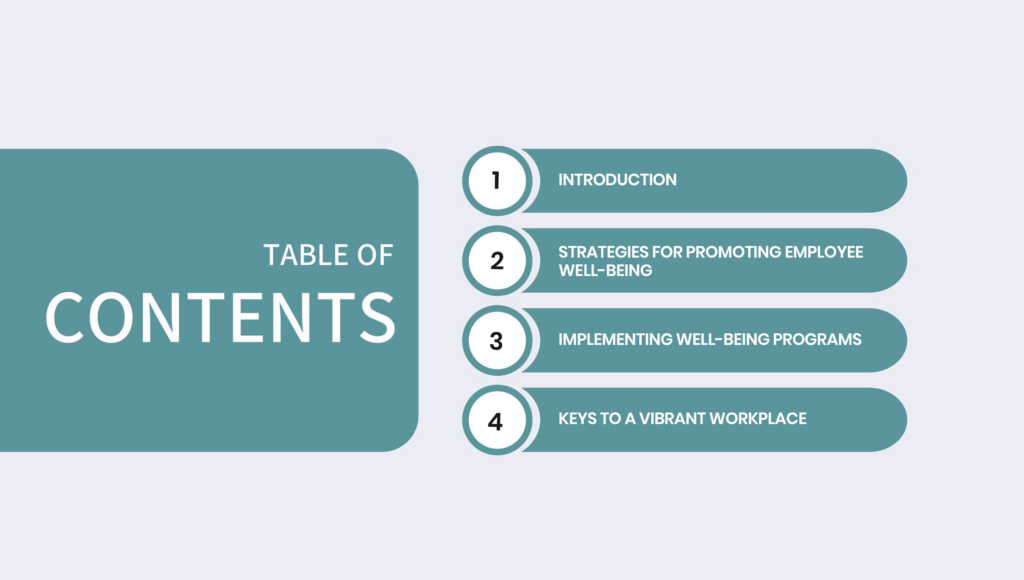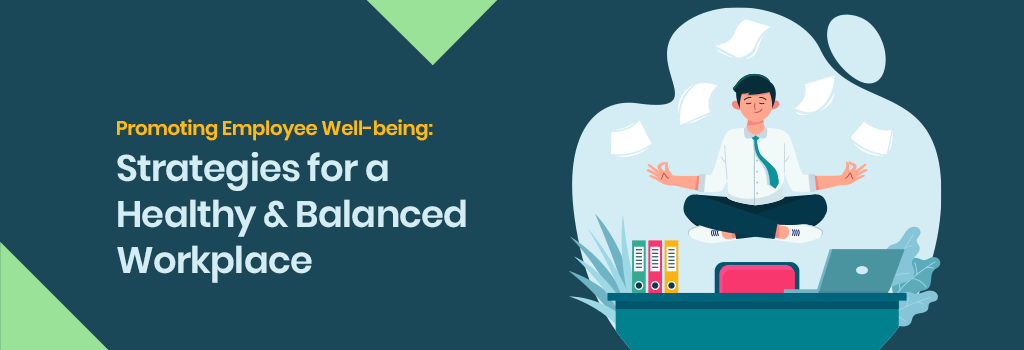Promoting employee well-being is essential for fostering a healthy and productive workplace. Effective strategies can lead to improved morale and organizational success.

Introduction
Are your employees truly thriving in the workplace, or merely surviving?
How can you ensure that your employees feel supported and valued at work?
Studies reveal that 72% of employees are more likely to stay with a company that prioritizes their well-being.
Prioritizing employee well-being is crucial as it directly impacts overall job satisfaction and reduces turnover rates.
Strategies for Promoting Employee Well-being
The well-being of employees is a fundamental aspect of a thriving workplace, yet many organizations struggle to effectively support their staff’s health and happiness.
How can businesses create an environment where employees feel valued and cared for?
Statistics indicate that nearly 79% of workers report significant stress impacting their work-life balance and productivity.
Addressing employee well-being is not just a benefit for employees; it is a strategic advantage for businesses aiming to thrive in a competitive market.
By adopting comprehensive strategies to promote employee well-being, organizations can boost morale, increase retention, and drive sustained success. Creating a healthy and balanced workplace is within reach with the right approach and commitment.
Here are our 5 strategies that can help promote employee well-being:
1. Work-Life Harmony Efforts
Promoting a healthy work-life balance is crucial for employee well-being.
Employers can implement flexible working hours, remote work options, and encourage regular breaks to help employees manage their personal and professional lives effectively.
For instance, offering compressed workweeks or job-sharing opportunities allows employees to meet their personal obligations without compromising their work responsibilities. Ensuring that employees have ample time to recharge and spend with their families can lead to higher job satisfaction and reduced burnout.
2. Mental and Emotional Well-being Programs
Supporting the mental and emotional well-being of employees is vital in today’s fast-paced work environment.
Companies can offer access to counseling services, mental health workshops, and stress management programs. Providing resources such as Employee Assistance Programs (EAPs) that offer confidential support can help employees deal with personal and professional challenges.
Additionally, promoting a culture of open communication where employees feel comfortable discussing their mental health can lead to a more supportive and empathetic workplace.
3. Physical Well-being Initiatives
Encouraging physical health is another key aspect of promoting employee well-being.
Employers can offer gym memberships, organize fitness challenges, and provide healthy snacks in the office.
Regular health screenings and wellness workshops on topics like nutrition and exercise can also be beneficial. Creating a workplace environment that supports physical activity, such as having standing desks or providing bike racks, can help employees stay active and healthy, reducing the risk of chronic illnesses.
4. Social Connections and Team Cohesion
Fostering strong social connections and team cohesion is important for creating a sense of community at work.
Organizing team-building activities, social events, and group outings can help employees build relationships, improve collaboration, promote informal interactions enhancing the overall work atmosphere.
A workplace that values social well-being helps employees feel more connected and supported, leading to higher morale and job satisfaction.
5. Financial Wellness Programs
Financial stability is a significant component of employee well-being.
Employers can offer financial wellness programs that provide education on budgeting, saving, and investing.
Providing access to financial advisors or workshops on retirement planning can help employees manage their finances more effectively. Additionally, offering competitive salaries, retirement plans, and other financial benefits can alleviate financial stress and contribute to overall employee well-being.
Implementing Well-being Programs
Rolling out well-being initiatives in the workplace is a strategic approach to ensuring that employees are healthy, satisfied, and productive. Here’s how to successfully implement well-being programs in your organization:
1. Nurture Leadership Backing
Leaders set the tone for the organizational culture and their endorsement can significantly influence the success of these initiatives.
When leaders actively participate in well-being programs, it sends a strong message about the organization’s commitment to employee health. This can include leaders attending wellness events, discussing well-being in meetings, and allocating resources towards these programs.
Leadership backing not only boosts program credibility but also encourages higher employee participation.
2. Solicit Employee Feedback
To ensure that well-being programs are effective and meet the actual needs of employees, it is important to solicit their feedback. This can be done through surveys, focus groups, and suggestion boxes.
Gathering employee input helps in identifying the most relevant and desired well-being initiatives. It also makes employees feel valued and heard, increasing their engagement with the programs.
By understanding the specific challenges and preferences of your workforce, you can design well-being initiatives that truly resonate with them.
3. Customize Programs to Fit Employee Needs
One size does not fit all when it comes to employee well-being programs. Customizing initiatives to address the diverse needs of your workforce is crucial.
For example, younger employees might benefit from fitness challenges and digital wellness apps, while older employees might appreciate retirement planning workshops and health screenings.
Tailoring programs can involve offering a variety of options that cater to different interests and life stages, ensuring that everyone can find something beneficial. Personalized programs demonstrate an organization’s commitment to individual well-being and can lead to higher participation rates and better outcomes.
4. Effective Communication and Continued Assistance
Employees need to be aware of the available initiatives, understand how to access them, and be motivated to participate.
Utilize multiple channels such as emails, posters, and meetings to promote well-being programs. Moreover, providing continued assistance and follow-ups is key to maintaining engagement. This includes offering ongoing support, updating programs based on feedback, and celebrating successes.
Regularly communicating the benefits and outcomes of well-being initiatives keeps them at the forefront of employees’ minds and reinforces the organization’s commitment to employee well-being.
Keys to a Vibrant Workplace
Remember investing in your employees’ well-being is investing in the future success of your organization.
When well-being is at the heart of your organizational strategy, success naturally follows.
Let’s champion employee well-being and watch as your workplace transforms into a hub of health, happiness, and high performance.

